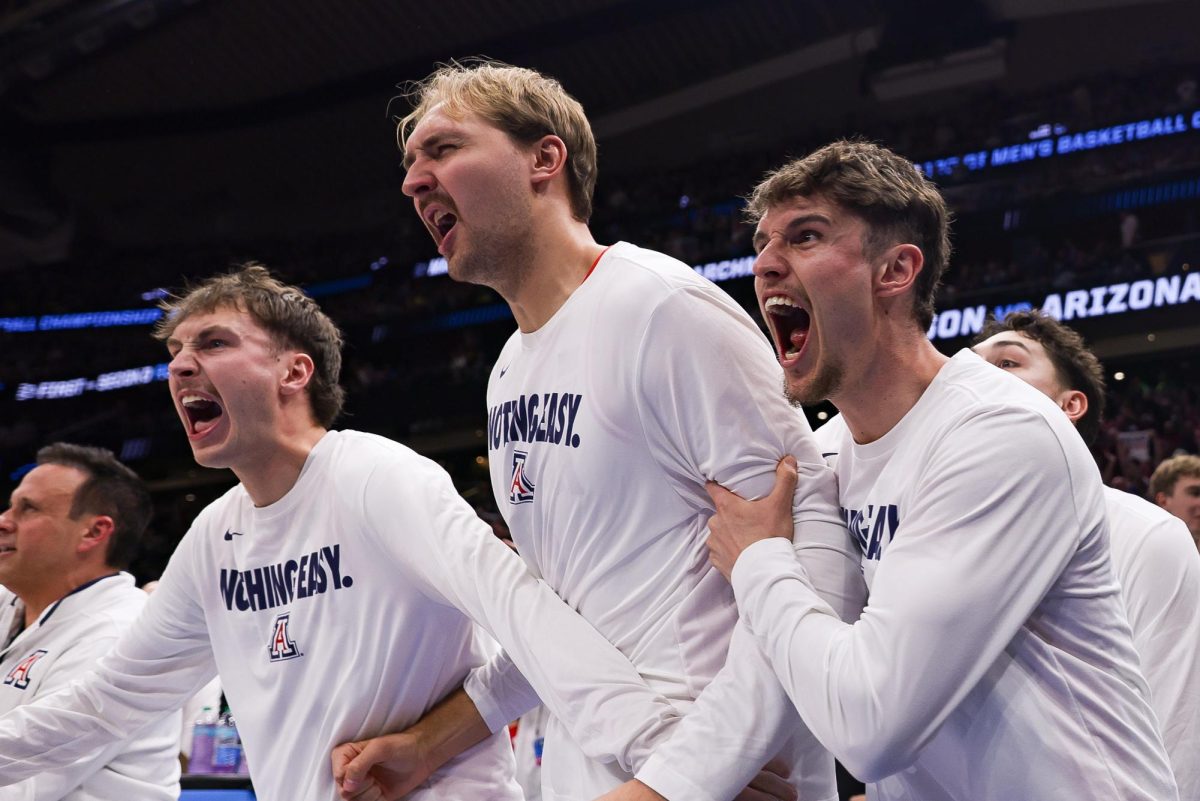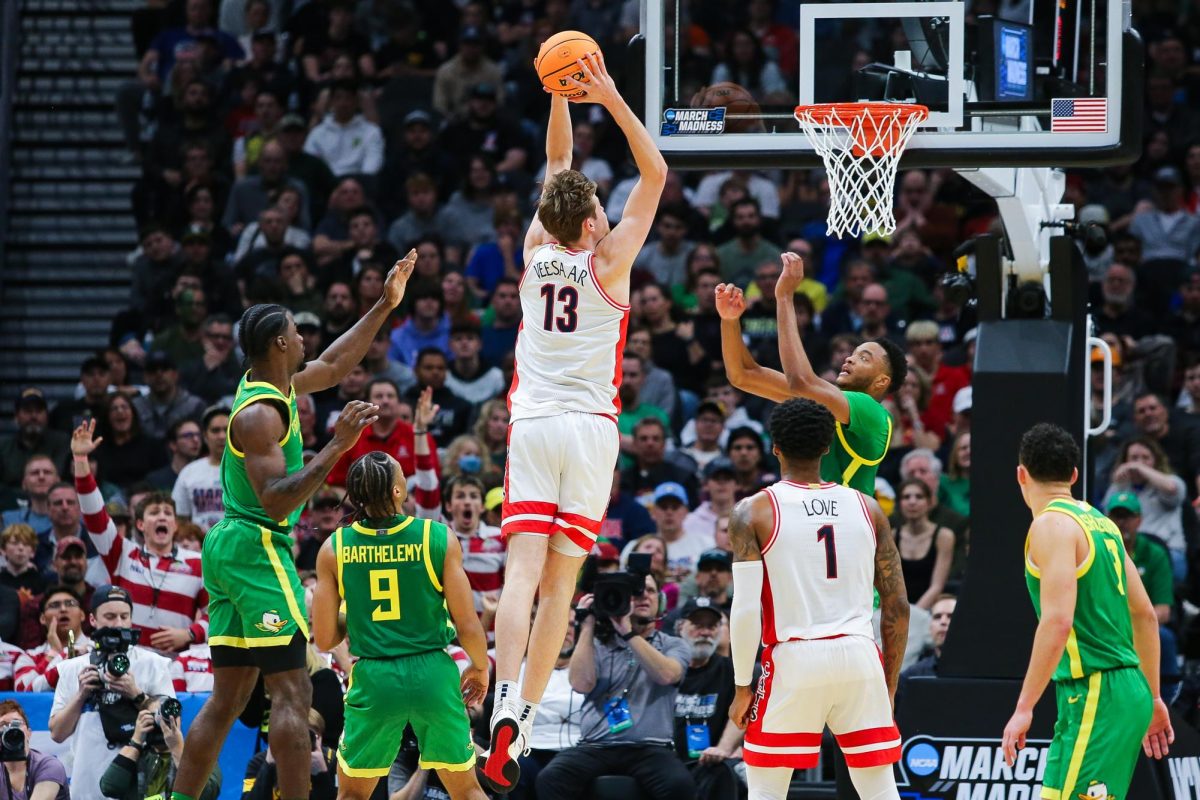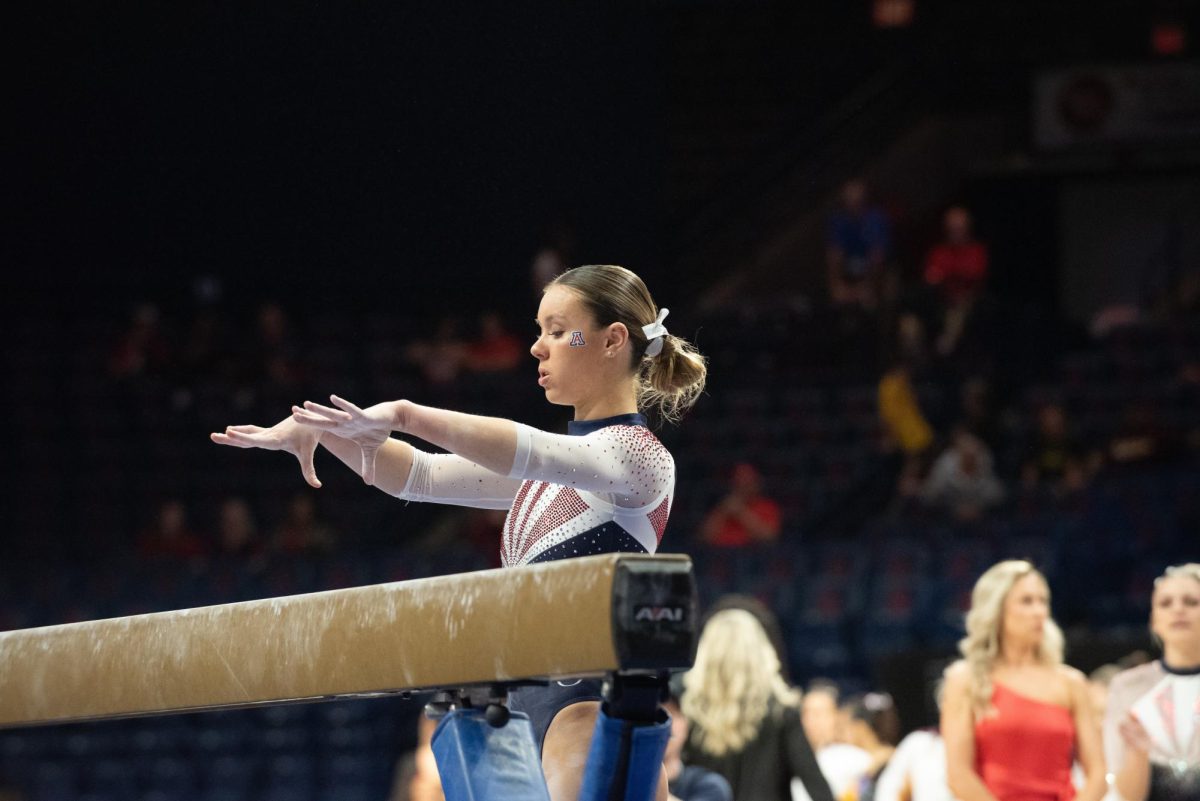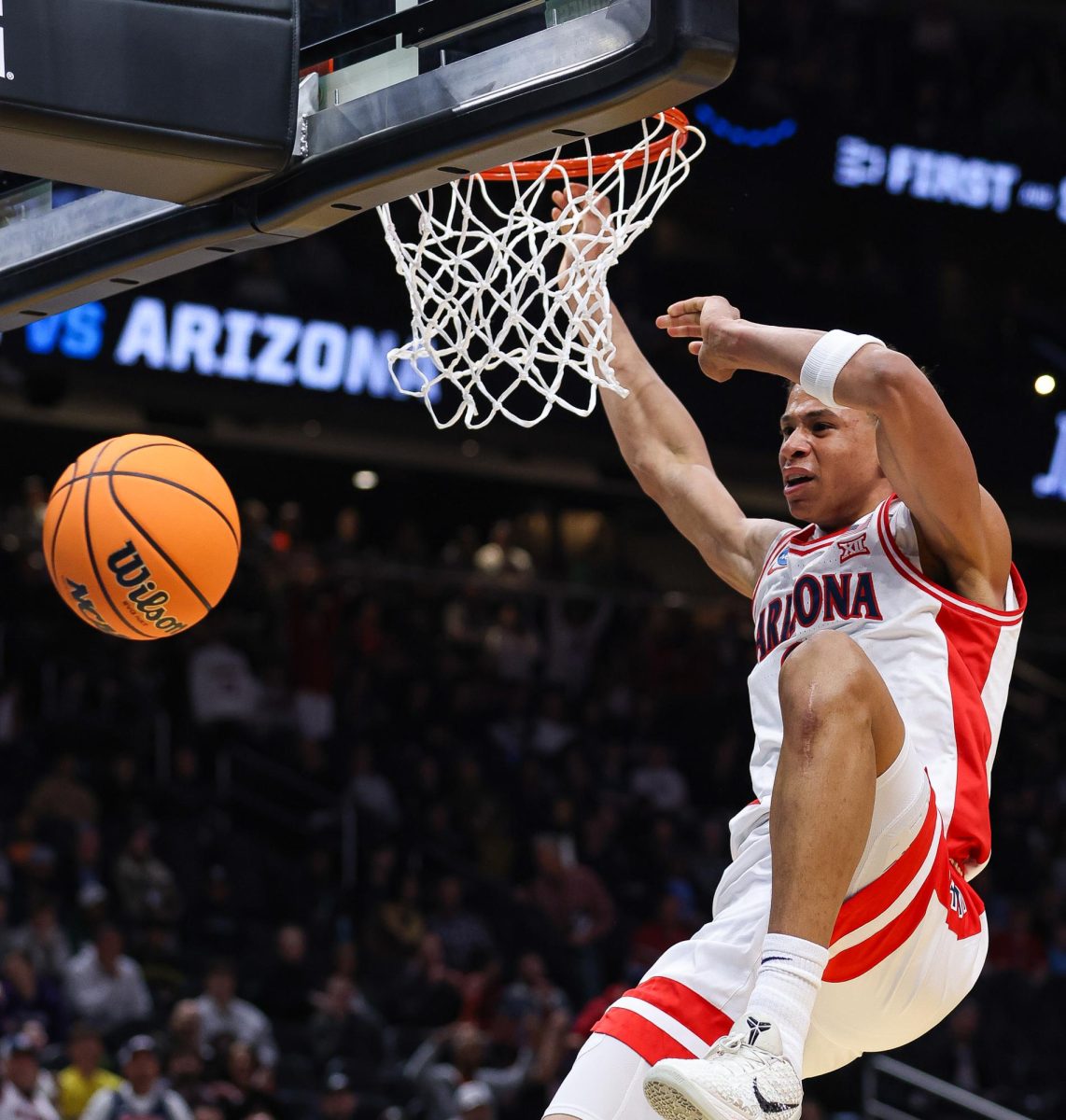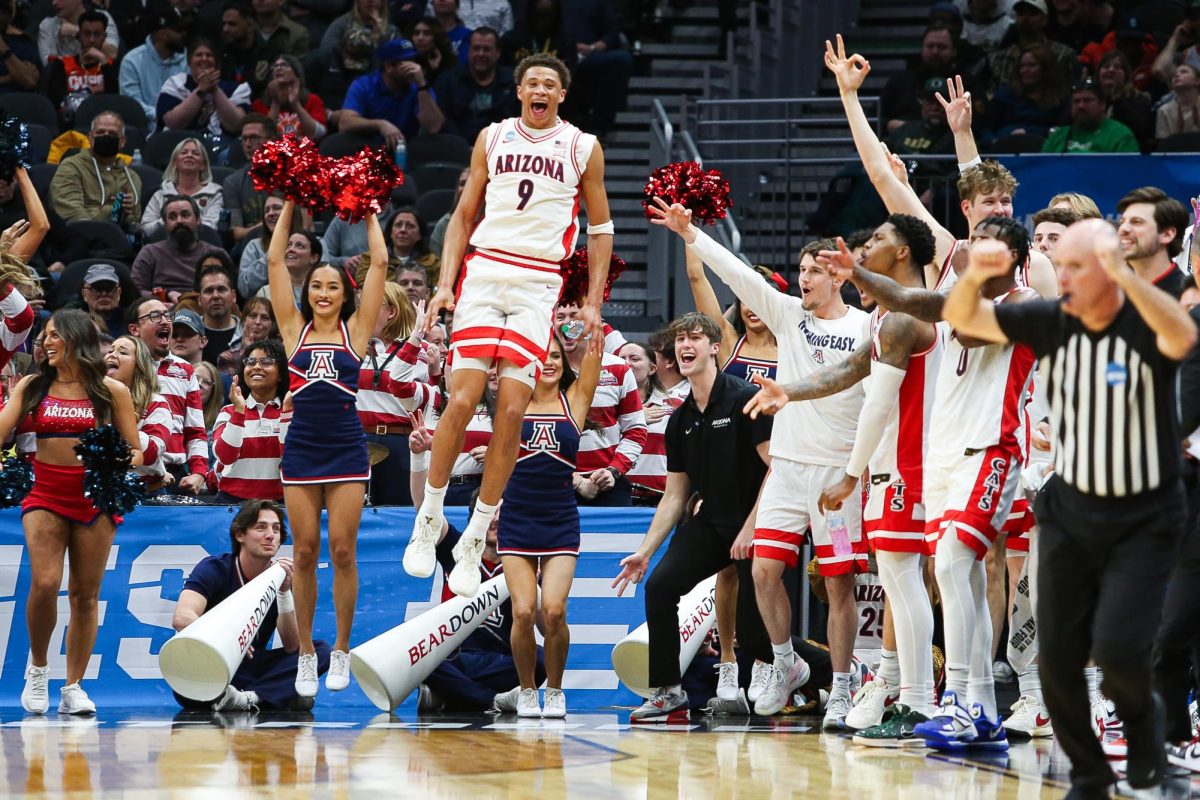The overhauled Pac-12 Conference took a final leap towards its vital upcoming television contract negotiations by aligning football’s conference divisions, solidifying title game logistics and finalizing revenue sharing
Commissioner Larry Scott announced the expected football divisional alignment Thursday morning: Arizona joins ASU, UCLA, USC, Colorado and Utah in the Pac-12 South.
Stanford, California, Oregon, Oregon State, Washington and Washington State create the Pac-12 North by a unanimous agreement throughout league.
The nine-game conference football schedule includes the five inter-divisional games and four cross-division games. To maintain the deep tradition between the division-split Los Angeles and Bay Area schools, those four are guaranteed to play each other annually by using two of their four cross-division games on each other, Scott said.
The best overall record in 2011 also hosts the conference’s first-ever football championship game. Scott said the league could use head-to-head or BCS to determine a tiebreaker if needed.
“”This is truly a historic day for the Pac-12 conference,”” Scott said in San Francisco today. “”Our overarching objectives were very simple clear: we aimed to create a modern 12-team conference for the long-term.
“”We’re building not just a national, but a global brand,”” Scott said.
Expected revenue
The league also approved an equal revenue sharing agreement with one stipulation: Any year the conference does not earn $170 million in total media rights, UCLA and USC will each receive $2 million since both schools have traditionally generated more under the conference’s current appearance-based television revenue deal.
Beginning in 2012, Arizona could receive about $15 million per season — almost double of what it earns now — based on market value of upcoming television contract negotiations.
“”There are other leagues in that ballpark already,”” said UA athletic director Greg Byrne. “”Knowing that we’re united as a league going forward, that helps us a lot with TV. There are players out there that want to be involved in college sports at a major level.””
Byrne said the expected financial gains subsidize the burden of relying on ticket prices to pay for competitive coach’s salaries, new facilities and maintaining the 500-plus student-athletes from non-revenue generating sports.
Southern California connection
The significance of competing in a division with the Los Angeles schools was on everyone’s radar. From a hotbed of nationally touted recruits in every sport to large alumni fan bases, Byrne recognized the impact — and geographic fortune — of maintaining strong ties with UCLA and USC.
“”That was one of my arguments, let’s talk about from a travel standpoint, what allows our fans to get to see our teams play the most,”” Byrne said.
Football’s title game setting
The league discussed several scenarios for the revenue-driven football championship game — neutral sites from Glendale to Seattle and every major city in between — but decided on home field advantage after weighing the benefits seen by the NFL Playoff model.
“”There will be great enthusiasm whoever the home team is,”” Byrne said. “”I think the atmosphere will be there, the ticket sales will be there. We hope it’s in Tucson, Arizona as much as possible.””
Basketball unchanged
Basketball will not divide, but rather play an 18-game conference schedule with seven home-and-home series and four single games.
A new television contract could open up the entire week to games, rather than the Thursday-Saturday travel combinations in the current Pac-10 format.
Similarly, ESPN has weeknights dedicated to ACC and Big East games.
Launching its own network
The Pac-12 is “”very interested”” and “”seriously exploring”” its own television network, Scott said, but will wait for offers from other networks when negotiations begin next year.
Scott said television objectives go beyond financial gains, but exposure for the league’s highly competitive Olympic sports.




